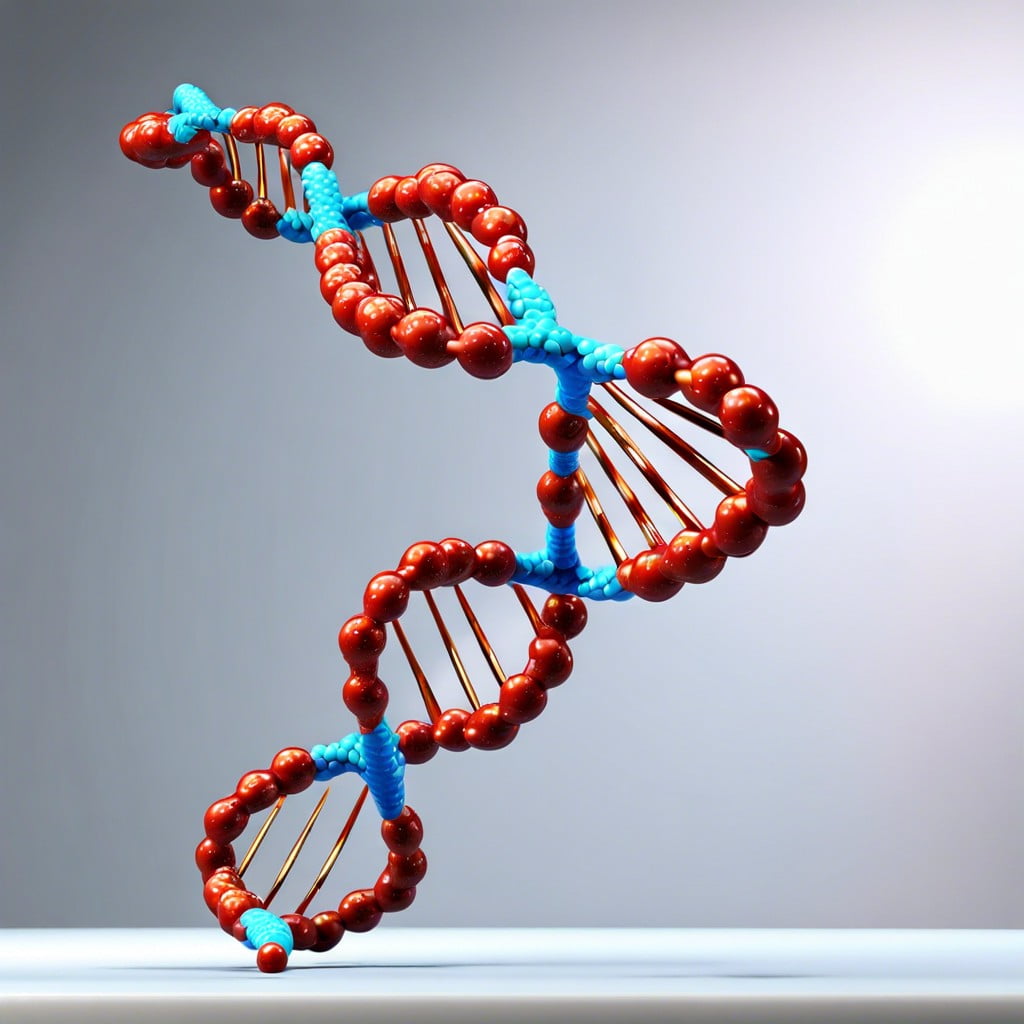Discover whether nucleic acid qualifies as a polymer and understand its structure and function in this clear guide.
Key takeaways:
- Nucleic acids are polymers made up of nucleotides.
- Nucleotides consist of a sugar molecule, a phosphate group, and a nitrogenous base.
- DNA and RNA are examples of nucleic acids.
- DNA holds the genetic instructions for life, while RNA helps to carry out those instructions.
- Polynucleotide chains form through phosphodiester linkages between nucleotides.
Definition of Polymers

Polymers are like the LEGO bricks of the molecular world. They are large molecules made up of repeating units called monomers, linked together like a chain. Think of a freight train, where each car is a monomer, and the entire train represents a polymer. This structure gives polymers their unique and versatile properties, making them essential in everything from plastic bottles to rubber tires and even DNA. Yes, DNA is a polymer too, but we’ll get to that part in a jiffy! The beauty of polymers lies in their variety; they can be engineered to be flexible, rigid, light, or durable, making them real life-savers—or at least, material-savers—in many industries.
Nucleic Acids As Polymers
Absolutely! Nucleic acids are indeed part of the polymer family. Imagine polymers as a string of beads, where each bead represents a smaller, repeating unit. In the case of nucleic acids, these beads are called nucleotides.
Each nucleotide consists of three parts: a sugar molecule, a phosphate group, and a nitrogenous base. When these nucleotides chain together through covalent bonds—think linking hands in a human chain—they form the long, stable backbone of DNA or RNA. This makes nucleic acids prime examples of polymers, constructed in a specific sequence to store and transfer genetic information.
In essence, if you ever thought your DNA was just like reading an instruction manual, well, you weren’t too far off! The ‘beads’ in your genetic necklace spell out the steps needed for building and maintaining an organism, and it’s all thanks to their polymeric nature.
Components of Nucleic Acids: Nucleotides
Imagine nucleic acids as a train, with each coach representing a nucleotide. These coaches are not just randomly attached but have a specific order that determines the train’s destination, or in bio-terms, the genetic code.
Each nucleotide within DNA and RNA consists of three parts: a phosphate group, a sugar molecule, and a nitrogenous base. The sugar in DNA is deoxyribose, which, despite its name, is not lacking in sweetness – it’s just missing one oxygen atom compared to the sugar in RNA, ribose! The nitrogenous bases are like the different passengers in the coaches: adenine, thymine, cytosine, and guanine in DNA; replace thymine with uracil in RNA, and you’ve got a slightly different traveler.
These parts are bonded in a specific sequence to form the long, winding chains of DNA and RNA. Just as every coach in a train is crucial for it to function properly, each nucleotide is vital for the nucleic acid to carry out its genetic mission effectively. And there you have it! A train journey inside your cells!
Role of Nucleic Acids in Biology
Nucleic acids, namely DNA and RNA, have a starring role in the biological blockbuster of life. Imagine DNA as the ultimate instruction manual and architect of every living organism. It holds the blueprints that guide the development, function, growth, and reproduction of all known life forms. Every time a cell divides, DNA ensures its genetic information is passed along, keeping the saga of life continuous and consistent.
On the other hand, RNA is the industrious assistant director, translating DNA’s instructions into actions by synthesizing proteins. Proteins are the molecular workforce, executing a variety of tasks from speeding up chemical reactions to supporting cellular structures. This dynamic duo of nucleic acids ensures every scene in the cellular world runs smoothly, from a single cell to entire organisms, showcasing a perfect example of molecular efficiency. Through this complex yet fascinating mechanism, nucleic acids literally animate the instructions encoded within themselves, creating the diverse panorama of life.
Formation of Polynucleotide Chains
Imagine a game of building blocks where each piece has a specific place and order. That’s pretty much what happens when polynucleotide chains form. Each nucleotide, containing a sugar, a phosphate group, and a nitrogenous base, links together in a specific sequence to build something bigger and more complex than itself—the polynucleotide chain.
First up, a bond forms between the phosphate group of one nucleotide and the sugar component of the next. This connection is known as a phosphodiester linkage, which sounds like something you’d hear in a sci-fi movie but is actually more common than you’d think in biology!
This process repeats, and just like that, you’ve got yourself a growing chain. As more nucleotides join the party, the chain extends, eventually creating either DNA or RNA, depending on the type of nucleotide involved. These chains aren’t random; they’re determined by the instructions encoded within the genetic material. So, every nucleotide added is like following a recipe to bake a cake, where each ingredient must be added in a certain order to ensure your desert turns out perfect—except instead of a cake, you’re cooking up a blueprint for living organisms!
And just like that, bit by bit, a simple nucleotide transforms into a beautiful staircase of genetic information that can replicate, store, and transfer essential biological instructions. It’s quite the molecular dance!
Recap




